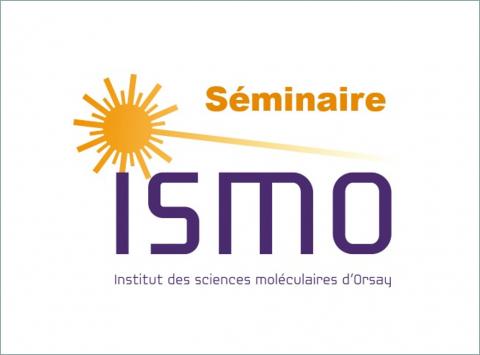
Séminaire de Raphaël Hahn, en mode HYBRIDE
Rydberg states of atoms and molecules as a toolbox for charged particle sources, cold chemistry and surface science
Raphaël Hahn
Laboratorium für Physikalische Chemie, ETH Zürich
Rydberg states of atoms and molecules (with principal quantum number n>20) present exaggerated properties in terms of radiative lifetime (τ α n3), of size (R α n2), or polarisability (α n7) … This allows their use in many fields and applications. I will present three examples from my PhD work, from my post-doc and from my CNRS’s project in ISMO.
I will present how we can use Rydberg atoms in a novel high-performance source of charged particles (electrons/ions) and how molecular Rydberg states can be used to study ion-molecule reactions at very low collision energy, for example the reactions H2+ + p-H2 or D2+ + NH3.
Finally I will present my project at ISMO that is to use Rydberg atoms as a source of weakly bound electrons to study electron attachment on surfaces at high energy resolution.
Contact pour demander le lien :
http://www.ismo.universite-paris-saclay.fr/spip.php?article2738
Rydberg states of atoms and molecules as a toolbox for charged particle sources, cold chemistry and surface science
Raphaël Hahn
Laboratorium für Physikalische Chemie, ETH Zürich
Rydberg states of atoms and molecules (with principal quantum number n>20) present exaggerated properties in terms of radiative lifetime (τ α n3), of size (R α n2), or polarisability (α n7) … This allows their use in many fields and applications. I will present three examples from my PhD work, from my post-doc and from my CNRS’s project in ISMO.
I will present how we can use Rydberg atoms in a novel high-performance source of charged particles (electrons/ions) and how molecular Rydberg states can be used to study ion-molecule reactions at very low collision energy, for example the reactions H2+ + p-H2 or D2+ + NH3.
Finally I will present my project at ISMO that is to use Rydberg atoms as a source of weakly bound electrons to study electron attachment on surfaces at high energy resolution.
Contact pour demander le lien :
http://www.ismo.universite-paris-saclay.fr/spip.php?article2738
